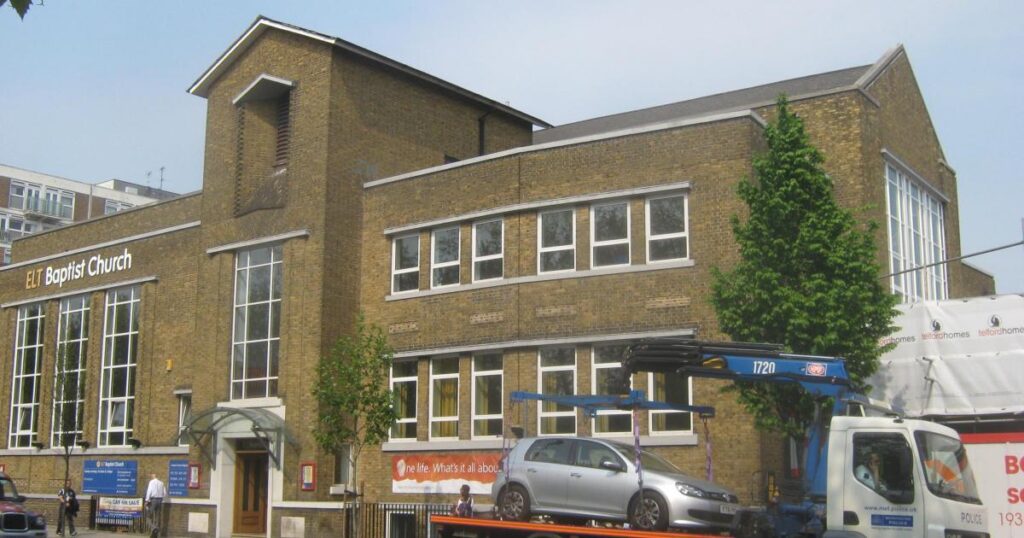The East London Tabernacle Baptist Church (ELT) in Mile End was at risk of closure due to the state of the building, according to the National Churches Trust.
It added the church, which is used by around 550 people regularly and visited by 4,500 people each year, had concrete lintels in such poor condition that they had fractured.
A spokesperson said this posed a risk of falling onto users of the building, which hosts a homeless night shelter, youth clubs, and a parent and toddler group.
Cracked concrete lintels at East London Tabernacle reportedly posed a risk to visitors (Image: W.A.Mattis) The fractures also posed a risk of severe water damage, as they allowed rainwater to penetrate the walls of the church.
The trust has come to the rescue, providing a £12,000 grant to help pay for urgent repairs to the building.
Claire Walker, chief executive of the National Churches Trust, said: “The National Churches Trust is delighted to be able to support East London Tabernacle to enable them to carry out urgent repairs to their building.
“Not only will this protect this important heritage, but it will help to keep the church building open and serving local people.”
The church, which was opened in 1955 and designed by architect Hubert Lidbetter, is not listed but holds significant historical importance.

The site was previously home to the second largest non-conformist church in London, which was destroyed in the Second World War.
The repairs will ensure that the church can continue to serve the community and multiple congregations, including Korean, Brazilian, and Russian groups.
Andy Mossop, youth and community worker at ELT Baptist Church, said: “We are so delighted to receive this grant from the National Churches Trust.
“As a congregation, we have been praying and saving and asking and giving for the last nine months.
“This now brings the total raised to the point where we can start this essential maintenance work.”
The grant will enable the replacement of the lead above the lintels and the failed concrete, making the church safe and secure for future use.




